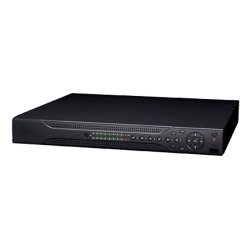 The digital video recording system is rapidly becoming one of the most popular security and surveillance documentation and monitoring tools in use today. Thanks to advancements in digital technology, not only is high-quality color digital video possible, but its also economically priced, easy to install, and versatile in application.
The digital video recording system is rapidly becoming one of the most popular security and surveillance documentation and monitoring tools in use today. Thanks to advancements in digital technology, not only is high-quality color digital video possible, but its also economically priced, easy to install, and versatile in application.
A digital video recording system is any system that captures digital video images and records them on some type of storage medium for later use. The difference between a digital video recording system and an analog video recording system is how the video image signal is created; however this lends itself to other differences such as how the video “footage” is stored, how it is transmitted, and what kinds and types of images are available.
First, let’s look at how an older analog video recording system works, then we’ll compare it with the newer digital video recording system. Both systems have a camera that “captures” the video images and a recorder that stores those images for playback at a later time. Each system may also use monitors to display real-time (live) video as it is captured.
Without getting too technical, an analog digital video camera contains a sensor chip called a Charged Coupled Device or CCD. The CCD converts the image’s light energy, which is focused onto it by the lenses, into electrical energy that can be measured and used to create a video image. The images are transferred from the camera to the video recorder and monitor using a coaxial video transmission cable.
The analog video recorder records the audio and video as magnetic signals, usually on a magnetic tape. What is actually happening is that the camera is taking several pictures per second but it appears to the human eye as smooth motion video. This is the same way its precursor, film video works.
Film cameras actually take several film pictures or photographs per second. Once the film is processed or “developed” a projector rolls the film from the full reel to an empty one. As the pictures pass in front of the projector lens in rapid succession, they give us the impression of a moving video. Since film is basically a linear storage device that can be hundreds of feet long, the term “video footage” was used to refer to motion pictures.
Since analog video is stored as a magnetic pattern, each time the recorded video is played it has the potential for degrading the signal. In addition, time can also degrade the magnetic signal as the signal’s weaker points can fade. Analog video is stored on a variety of formats but the most popular magnetic video tape is VHS or BETA. The video recorder either uses a video tape loop that re-records after reaching the end of the tape or individual video tapes that must be replaced when the recorder reaches the end of the tape.
Digital video recording systems use basically the same technology to create digital video. Cameras record (with the advent of digital imagery, the term “record” is also used synonymously with “capture”; meaning that the camera “captures” light images) image light energy and transfer it into electrical energy. However, the fundamental difference in a digital video camera is that the camera also contains an analog-to-digit converter which turns the analog video signal into a series of 1s and 0s, or in other words, digital data.
This simple change has revolutionized the security camera industry. Since the digital video signal is now stored as a digital file, many other technological changes have taken place that have made digital video recording systems differ from their older analog parents. Here are some of the differences (some are more advantageous than others) of using digital video recording systems:
• Personal Computers can now be used to control and record the cameras;
• Standalone digital video recording systems save their data to Digital Video Recorders or DVRs that have the potential for storing thousands of times more data in the space of an analog medium;
• Cameras can be networked, controlled, and monitored using the internet;
• Components of the system are smaller, lighter, and more efficient using less energy;
• Digital signals are 1s and 0s – they do not fade or degrade like analog signals can.
Digital video recording systems have become so popular that they are now the norm in the security video industry, rather than the exception. If you are interested in learning more, check out Security Camera King’s “CCTV Learning Center.”











